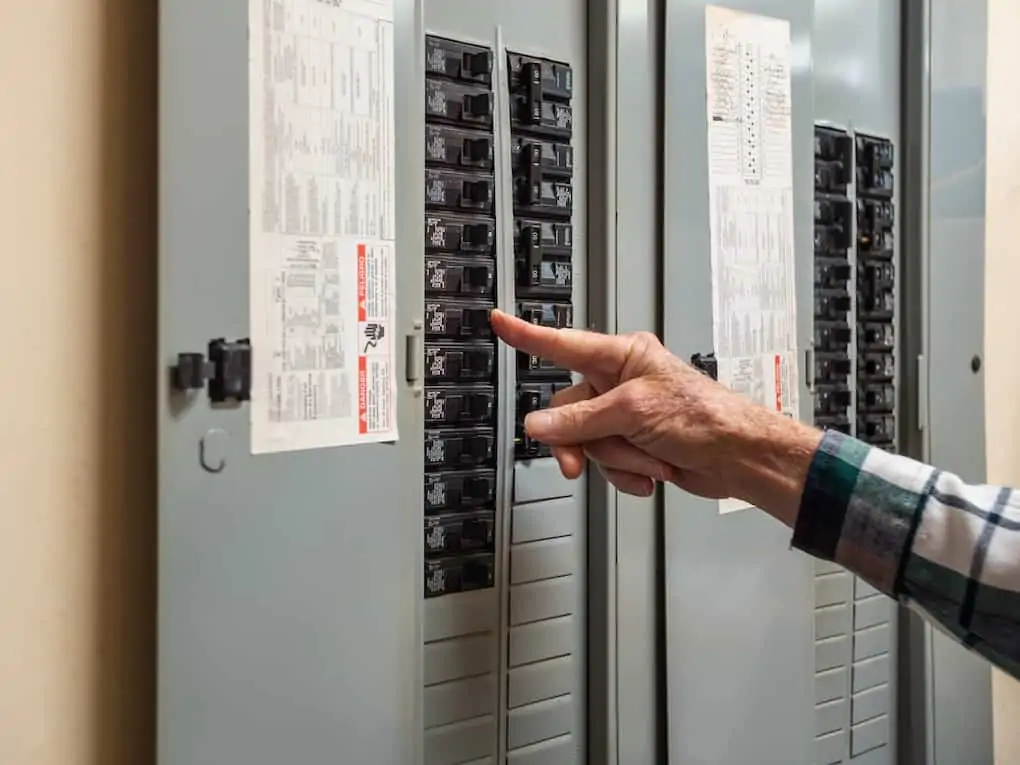Your home’s electrical panel, often referred to as the breaker box or fuse box, is the hub of your electrical system. It controls the distribution of electricity to various circuits throughout your home, ensuring that appliances, lights, and outlets function safely and reliably. Over time, electrical panels can become outdated or show signs of wear and tear, requiring replacement. In this blog, we will discuss when it’s time to replace your electrical panel and guide you through the process of choosing the right one, without promoting DIY solutions.
When to Replace Your Electrical Panel
- Age of the Panel: The age of your electrical panel is a significant factor in determining when it should be replaced. If your panel is 25–30 years old or older, it may no longer meet current safety standards and could pose a fire hazard.
- Frequent Electrical Issues: If you experience frequent electrical problems such as tripped breakers, flickering lights, or overheating, it could be a sign that your panel is overloaded or malfunctioning.
- Obsolete or Unsafe Panels: Some older panels, such as Federal Pacific Electric (FPE) or Zinsco panels, are known for safety issues and should be replaced as soon as possible.
- Renovations or Home Additions: If you plan to undertake renovations or add new appliances to your home, you may need to upgrade your electrical panel to accommodate the increased electrical load.
- Insurance or Safety Inspection Requirements: Insurance companies and safety inspectors may require you to replace an outdated or unsafe electrical panel to ensure the safety of your home.
Choosing the Right Electrical Panel
Selecting the right electrical panel for your home is a crucial decision that requires careful consideration. Here are the steps to follow:
- Assess Your Electrical Needs: Begin by evaluating your home’s electrical needs. Consider the number of circuits required, the size of your home, and any planned renovations or additions. This will help determine the panel’s capacity.
- Consult an Electrician: It’s essential to consult a licensed electrician who can assess your current electrical system, recommend an appropriate panel, and ensure it complies with local electrical codes.
- Choose the Right Amp Rating: Electrical panels come in different amp ratings. Common residential panels are 100, 150, or 200 amps. The choice depends on your home’s size and electrical needs. A professional electrician can guide you in selecting the right amp rating.
- Consider Panel Features: Modern electrical panels offer various features, including circuit breakers, surge protection, and even smart capabilities. Discuss these options with your electrician to determine which features are necessary for your home.
- Brand and Quality: Choose a reputable brand and high-quality electrical panel. Your electrician can recommend trusted brands known for reliability and safety.
- Budget and Cost: Electrical panel replacement is an investment in your home’s safety and functionality. While cost is a consideration, it’s essential to prioritize safety and quality over saving money.
- Permit and Inspection: Ensure that you obtain the necessary permits for the electrical panel replacement and have the work inspected by the local authorities to ensure it complies with safety standards.
The Replacement Process
Once you’ve chosen the right electrical panel, the replacement process should be handled by a qualified electrician.
- Disconnect Power: The electrician will disconnect the power to your home to ensure safety during the panel replacement.
- Remove the Old Panel: The old electrical panel will be removed carefully, disconnecting all wires and circuits.
- Install the New Panel: The new panel will be installed, and all circuits and wires will be connected correctly.
- Testing and Inspection: The electrician will thoroughly test the new panel to ensure it functions correctly and safely. This may include checking for proper grounding and verifying that all circuits are functioning as intended.
- Reconnect Power: Once everything has been tested and inspected, the power to your home will be reconnected, and the new electrical panel will be fully operational.
Conclusion
Replacing your electrical panel is a crucial step in ensuring the safety and functionality of your home’s electrical system. When signs of wear and tear, frequent electrical issues, or safety concerns arise, it’s essential to consult a licensed electrician to assess your situation and recommend the appropriate panel replacement. By following the steps outlined in this blog and prioritizing safety and quality, you can make an informed decision about when and how to replace your electrical panel, keeping your home safe and up-to-date with modern electrical standards.
Oakland Electrician https://www.electricianoakland-ca.com/
